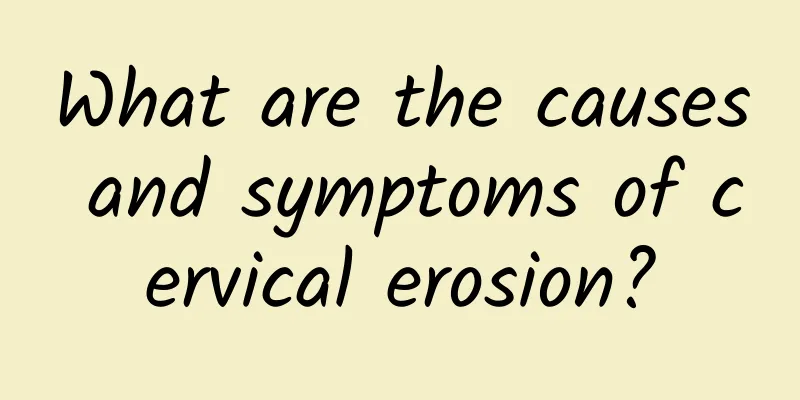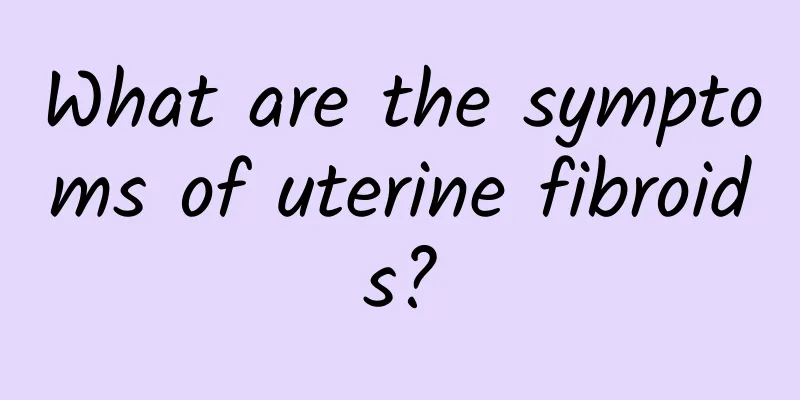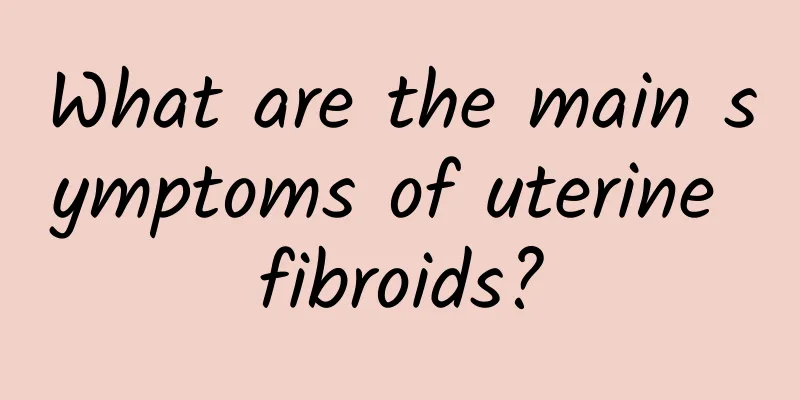What are the causes and symptoms of cervical erosion?

|
Cervical erosion is a physiological change of cervical epithelial cells, not a disease, and usually does not require excessive treatment. Its causes include changes in hormone levels, cervical inflammation, etc. Common symptoms are increased vaginal discharge or abnormal bleeding. Treatment methods are selected according to specific circumstances. Mild symptoms can be treated with observation or medication, while severe cases require physical therapy or surgery. 1. Causes of cervical erosion Changes in hormone levels are one of the main causes of cervical erosion. When women are in adolescence, pregnancy, or taking birth control pills, their estrogen levels rise, causing the columnar epithelium in the cervical canal to move outward, forming an erosive appearance. Cervical inflammation may also cause erosion, such as chronic cervicitis or infectious cervicitis, which stimulate cervical epithelial cells for a long time and cause them to change. Frequent sexual intercourse, multiple miscarriages or childbirth may also cause mechanical damage to the cervix, increasing the risk of erosion. 2. Common symptoms of cervical erosion The symptoms of cervical erosion vary from person to person, and some women may not experience obvious discomfort. Common symptoms include increased vaginal discharge, which may be yellow or have an odor. A small number of patients may experience contact bleeding, such as bleeding after sexual intercourse or after a gynecological examination. If accompanied by infection, it may be accompanied by lower abdominal pain or discomfort in the lumbar sacral region. These symptoms are not specific to cervical erosion and require a gynecological examination to confirm the diagnosis. 3. Treatment of cervical erosion Patients with mild cervical erosion and no symptoms usually do not need special treatment and only need regular follow-up. Drug treatment is suitable for patients with inflammation. Commonly used drugs include antibiotics such as metronidazole, anti-inflammatory drugs such as Baofukang suppositories or Chinese medicine preparations such as Fuyankang tablets. Physical therapy is suitable for patients with obvious symptoms or large areas of erosion. Common methods include laser therapy, cryotherapy or electrocautery. Surgical treatment is suitable for very rare cases. If the erosion is severe and recurrent, cervical conization or LEEP knife can be used for treatment. Cervical erosion is a common physiological phenomenon and does not require excessive treatment in most cases. Women should undergo regular gynecological examinations to promptly detect and treat potential problems. If symptoms such as abnormal vaginal discharge and contact bleeding occur, seek medical attention in a timely manner for a clear diagnosis and appropriate treatment. Maintaining good living habits and avoiding excessive cleaning or the use of irritating products can help maintain a healthy cervix. |
<<: Is cervical hypertrophy related to men
>>: What medicine should I take for endometritis and cervicitis
Recommend
How big does a uterine fibroid need to be for surgery? What are the symptoms of uterine fibroids?
As we all know, uterine fibroids are a common gyn...
The manifestations of several major hazards of vaginitis
Vaginitis is a gynecological disease that is very...
How much does ectopic pregnancy surgery cost?
How much does it cost for a woman to have an ecto...
What to do if a 48-year-old has a 8cm uterine fibroid
Uterine fibroids are the most common benign tumor...
How long can I breastfeed after a miscarriage during lactation? Learn more about it early
After abortion during lactation, you should adjus...
Describe in detail the main symptoms of patients with pelvic inflammatory disease
In recent years, the number of people suffering f...
Mermaid line coach Zheng Xinyu practices heart rate aerobics at home
Zheng Xinyu, the mermaid line coach who became fa...
What to check for cervicitis
Cervicitis is a common gynecological disease. If ...
What are the symptoms of Nabothian cyst?
What are the symptoms and characteristics of Nabo...
How much does endometriosis cost?
Endometriosis is a common disease that often occu...
Is there any shadow? Will eating enoki mushrooms cause cancer? If the body becomes acidic, will cancer come knocking on your door?
Enoki mushrooms are a must-have ingredient on the...
What is ectopic pregnancy intervention? Advanced treatment methods
Interventional treatment for ectopic pregnancy is...
What prenatal tests are needed to prepare for pregnancy after missed abortion?
After a missed miscarriage, planning another preg...
The number one job that is most likely to cause abdominal obesity is revealed! 3 tips to quickly eliminate belly fat
Did you know that abdominal obesity looks like a ...
At what age do uterine fibroids usually occur? At what age do uterine fibroids usually occur?
At what age do uterine fibroids commonly occur? T...









